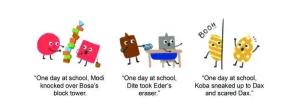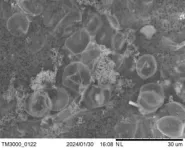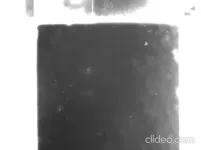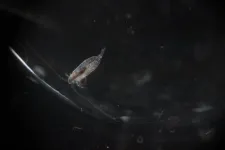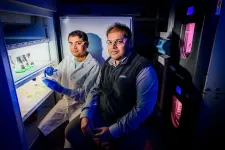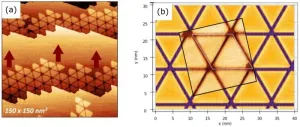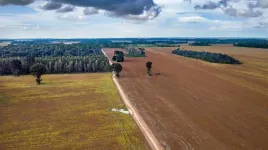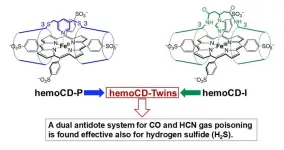(Press-News.org) A White House report earlier this year outlined how discrimination, and specifically racial discrimination, persists in the United States today, raising questions about when attitudes underlying these behaviors are formed.
Past scholarship has found discriminatory views increase as children grow older. However, new work by a team of New York University psychology researchers shows that young children in the US are less likely than adults to see discrimination as harmful, indicating these beliefs begin at an early age. Moreover, children see discriminatory acts—negative actions motivated by the victim’s group membership—as less serious than identical harmful acts motivated by other reasons, unrelated to the victim’s social identities.
“Children frequently encounter discrimination in their daily lives—as witnesses, victims, and, sometimes, as perpetrators,” observes Vivian Liu, the paper’s lead author and an NYU doctoral student at the time of the study, which appears in the journal Cognitive Psychology. “Our research reveals that, unlike adults, children in the US view discriminatory acts as more permissible than identical acts motivated by other reasons. This view of discrimination may lead children to engage in discriminatory behavior themselves, make them less likely to seek help when targeted by discrimination, and reduce their willingness to intervene when witnessing discrimination against others.”
However, the findings offer some reasons for optimism. They showed that by the age of 8, children begin to recognize discrimination as more harmful when it targets certain groups.
“This suggests that children can understand why discrimination is particularly harmful while also underscoring the importance of discussing these issues with children from an early age,” explains Andrei Cimpian, a professor in NYU’s Department of Psychology and the senior author of the paper.
The research consisted of four studies with nearly 600 children (aged 4 to 9) and more than 600 adults in the US. The paper’s authors presented the participants with scenarios involving harmful actions between members of different made-up groups, comparing situations where someone was harmed because of their group membership (discrimination) versus being harmed for other (personal) reasons.
In one of the studies, for example, adult and child participants saw a member of a group (e.g., an animated circle) harming (e.g., knocking over a tower of blocks) an outgroup member (e.g., an animated square). The participants were told the harm was motivated either by dislike of the victim’s group (a discriminatory act: “... because I don’t like Squares”) or by personal dislike for the victim (“... because I don’t like you”).
Both the perpetrator and the victim were introduced with a proper name (e.g., “Modi,” “Bosa”) so children could keep track of them throughout the story. The proper names were chosen to be uncommon in English so that children would not associate these characters with other people they knew with similar names.
In another study, the researchers varied whether these fictional groups were described in “essentialist” terms ( as biologically based and unchangeable)—to model how children conceive of real-world social categories such as race and gender—or instead in “temporary” terms (e.g., sports teams [“the green team”]).
Overall, the children, compared to adults, saw discriminatory acts as less serious than identical harmful acts motivated by personal reasons. In addition, the studies also found that while adults viewed discrimination against “essentialized” groups—those paralleling gender or race—as more serious than discrimination against temporary groups (like sports teams), children did not make this distinction.
However, in one study the researchers asked participants to consider the “status” of the groups by providing information such as the following: “The Circles always get what they want and the Squares never get what they want” (i.e., “Squares” are the lower-status group) and “Sometimes the Circles get what they want and sometimes the Squares get what they want” (i.e., the groups are of equal status).
In the majority of societies, the most common and concerning acts of discrimination occur against lower-status groups, note Cimpian and Liu, now a postdoctoral fellow at University College Dublin.
Younger children (roughly, before the age of 7 or 8 years) did not differentiate between discrimination against a lower- versus equal-status group. In contrast, children older than 7 or 8 began to recognize discrimination as more harmful when it targeted lower-status groups.
“Understanding how children’s views of discrimination differ from adults’ is essential for developing strategies to help them recognize and resist discriminatory behavior early in development,” Cimpian concludes.
# # #
END
Young children less likely than adults to see discrimination as harmful
New study of Americans points to importance of teaching about bias
2024-12-10
ELSE PRESS RELEASES FROM THIS DATE:
Tiny poops in the ocean may help solve the carbon problem
2024-12-10
A Dartmouth-led study proposes a new method for recruiting trillions of microscopic sea creatures called zooplankton in the fight against climate change by converting carbon into food the animals would eat, digest, and send deep into the ocean as carbon-filled feces.
The technique harnesses the animals' ravenous appetites to essentially accelerate the ocean's natural cycle for removing carbon from the atmosphere, which is known as the biological pump, according to the paper in Nature Scientific Reports.
It begins ...
Study offers insight into chloroplast evolution
2024-12-10
CHAMPAIGN, Ill. — One of the most momentous events in the history of life involved endosymbiosis — a process by which one organism engulfed another and, instead of ingesting it, incorporated its DNA and functions into itself. Scientific consensus is that this happened twice over the course of evolution, resulting in the energy-generating organelles known as mitochondria and, much later, their photosynthetic counterparts, the plastids.
A new study published in the journal Nature Communications explores the origin of chloroplasts, the plastids that allow plants ...
Advancing the synthesis of two-dimensional gold monolayers
2024-12-10
Nanostructured two-dimensional gold monolayers offer possibilities in catalysis, electronics, and nanotechnology.
Researchers have created nearly freestanding nanostructured two-dimensional (2D) gold monolayers, an impressive feat of nanomaterial engineering that could open up new avenues in catalysis, electronics, and energy conversion.
Gold is an inert metal which typically forms a solid three-dimensional (3D) structure. However, in its 2D form, it can unlock extraordinary properties, such as unique electronic behaviors, enhanced surface reactivity, and immense potential for revolutionary applications in catalysis ...
Human disruption is driving ‘winner’ and ‘loser’ tree species shifts across Brazilian forests
2024-12-10
Fast-growing and small-seeded tree species are dominating Brazilian forests in regions with high levels of deforestation and degradation, a new study shows.
This has potential implications for the ecosystem services these forests provide, including the ability of these ‘disturbed’ forests to absorb and store carbon. This is because these “winning” species grow fast but die young, as their stems and branches are far less dense than the slow growing tree species they replace.
Wildlife species adapted to consuming and dispersing the large seeds of tree species that ...
A novel heme-model compound that treats lethal gas poisoning
2024-12-10
You may not be familiar with hydrogen sulfide, a colorless gas that smells like rotten eggs, and is produced naturally from decaying matter. However, this gas is lethal to breathe in, and hydrogen sulfide present in high concentrations can cause death very rapidly. Its relative density is also greater than air, causing it to accumulate at lower altitudes and posing an enormous threat to workers at sites, such as manholes, sewage systems and mining operations.
Why is hydrogen sulfide so dangerous? It binds strongly to the heme-containing cytochrome c oxidase ...
Shape-changing device helps visually impaired people perform location task as well as sighted people - EMBARGO: Tuesday 10 December (10:00 UK time)
2024-12-10
IMPERIAL COLLEGE LONDON PRESS RELEASE
Under STRICT EMBARGO until:
10 December 2024
10:00 UK TIME / 05:00 ET
Peer-reviewed / Observational study / People
Trial shows no significant difference in performance between visually impaired participants using new device and sighted participants using only natural vision.
Participants performed significantly better using new device than with currently available vibration technology.
The new device is believed to be the most advanced navigation tech of ...
AI predicts that most of the world will see temperatures rise to 3°C much faster than previously expected
2024-12-10
Three leading climate scientists have combined insights from 10 global climate models and, with the help of artificial intelligence (AI), conclude that regional warming thresholds are likely to be reached faster than previously estimated.
The study, published in Environmental Research Letters by IOP Publishing, projects that most land regions as defined by the Intergovernmental Panel on Climate Change (IPCC) will likely surpass the critical 1.5°C threshold by 2040 or earlier. Similarly, several regions are on track to exceed the 3.0°C threshold ...
Second round of FRONTIERS Science Journalism Residency Program awards grants to ten journalists
2024-12-10
The FRONTIERS Science Journalism in Residency Programme has selected ten science journalists to participate in its second round of residencies. The chosen candidates—Marta Abbà, Rina Caballar, Danielle Fleming, Will Grimond, Giorgia Guglielmi, Suvi Jaakkola, Tim Kalvelage, Thomas Reintjes, Senne Starckx, and Meera Subramanian—will spend three to five months in residency at European research institutions, working on their journalistic projects.
The residencies, hosted by institutions in Austria, Denmark, Germany, Italy, the Netherlands, Norway, Spain and the United Kingdom, offer a unique opportunity ...
The inequity of wildfire rescue resources in California
2024-12-10
AUSTIN, TX, December 10, 2024 – Wildfires in California are intensifying due to warmer temperatures and dry vegetation – putting more residents at risk of experiencing costly damages or losing their homes. Marginalized populations (lower income, elderly, and the disabled) often suffer the most and, according to a new study, may receive less economic and emergency assistance compared to wealthy residents.
A detailed analysis of more than 500 California wildfire incidents from 2015 to 2022 by University at Buffalo scientists shows that disaster recovery resources in California favor people living in wealthy communities over disadvantaged ...
Aerosol pollutants from cooking may last longer in the atmosphere – new study
2024-12-10
New insights into the behaviour of aerosols from cooking emissions and sea spray reveal that particles may take up more water than previously thought, potentially changing how long the particles remain in the atmosphere.
Research led by the University of Birmingham found pollutants that form nanostructures could absorb substantially more water than simple models have previously suggested. Taking on water means the droplets become heavier and will eventually be removed from the atmosphere when they fall as rain.
The team, also involving researchers ...
LAST 30 PRESS RELEASES:
Missed signals: Virginia’s septic strategies overlook critical timing, study warns
Delayed toxicities after CAR T cell therapy for multiple myeloma are connected and potentially preventable
Scientists find cellular key to helping plants survive in saltwater
Medical cannabis program reduces opioid use
Immunotherapy works for sepsis thanks to smart patient selection
Cardiovascular events 1 year after RSV infection in adults
US medical prices and health insurance premiums, 1999-2024
Medical cannabis and opioid receipt among adults with chronic pain
Multichannel 3D-printed bioactive scaffold combined with siRNA delivery for spinal cord injury recovery
Triaptosis—an emerging paradigm in cancer therapeutics
A new paradigm in spectroscopic sensing: The revolutionary leap of SERS-optical waveguide integration and ai-enabled ultra-sensitive detection
Sweet tooth: How blood sugar migration in diabetes affects cavity development
Lowest suicide rate is in December but some in media still promote holiday-suicide myth
Record-breaking cosmic explosion challenges astronomers’ understanding of gamma-ray bursts
Excessive heat harms young children’s development, study suggests
Quanta Books to publish popular math and physics titles by Terence Tao and David Tong
Philanthropic partnerships fund next-generation instruments for mid-sized telescopes
AI offers ‘roadmap’ to plant genetics
Myosin XI-1: A key molecular target for salt-tolerant crops
Pusan National University study highlights the health hazards of ultrafine particles from small home appliances with electric heating coils and brushed DC motors
Global first: New Indigenous-led research initiative to revitalize legal orders
Transforming acoustic waves with a chip
When climate risk hits home, people listen: Study reveals key to engagement with disaster preparedness messaging
Major breakthrough against diabetes thanks to a microbial molecule that disarms inflammation
Silicon chips on the brain: Researchers announce a new generation of brain-computer interface
Getting rest is the best
Towards sustainable organic synthesis – Mechanochemistry replaces lithium with sodium in organic reactions
Wireless device ‘speaks’ to the brain with light
Greenhouse gases to intensify extreme flooding in the Central Himalayas
New study sheds light on Milky Way's mysterious chemical history
[Press-News.org] Young children less likely than adults to see discrimination as harmfulNew study of Americans points to importance of teaching about bias
